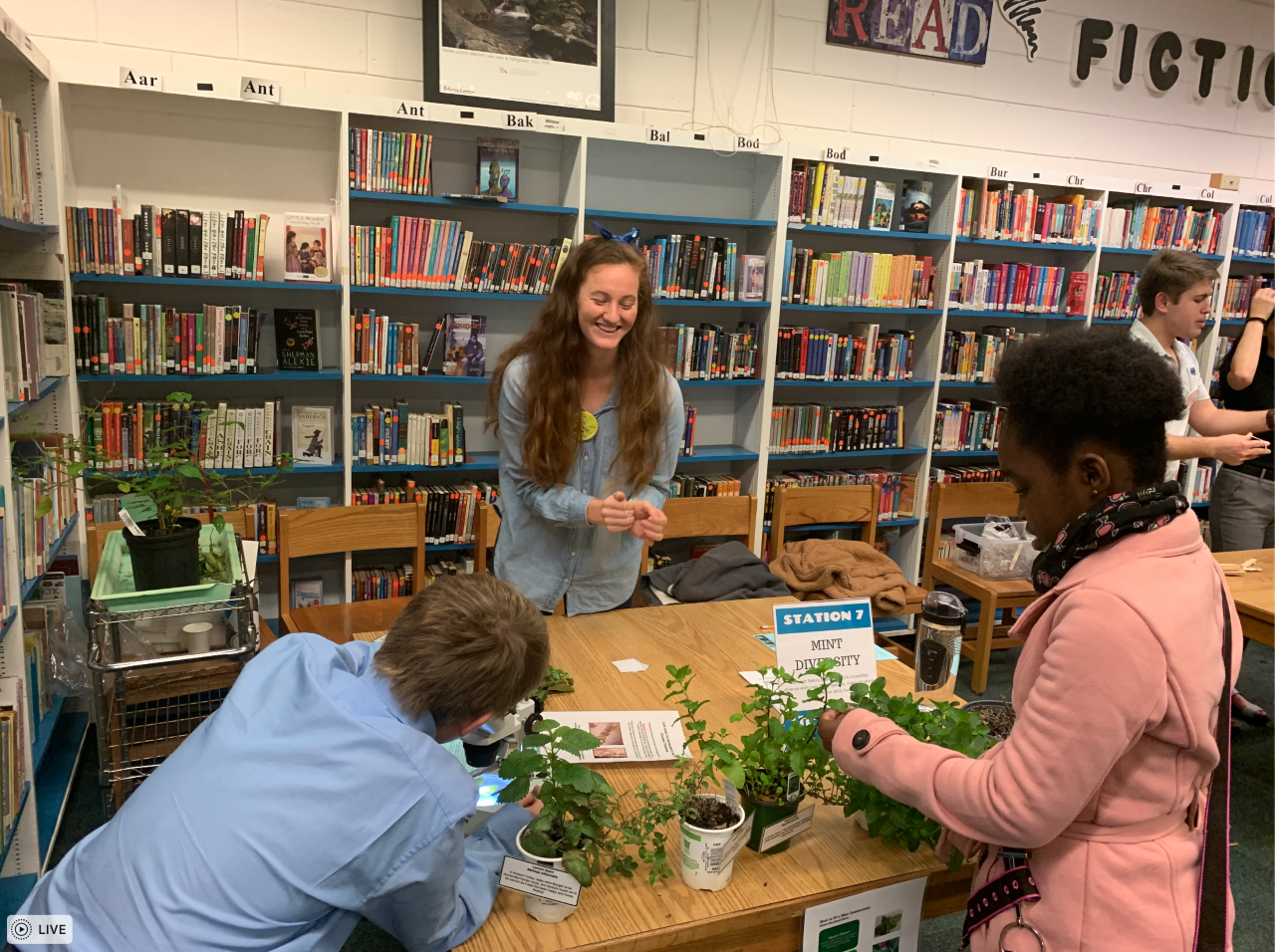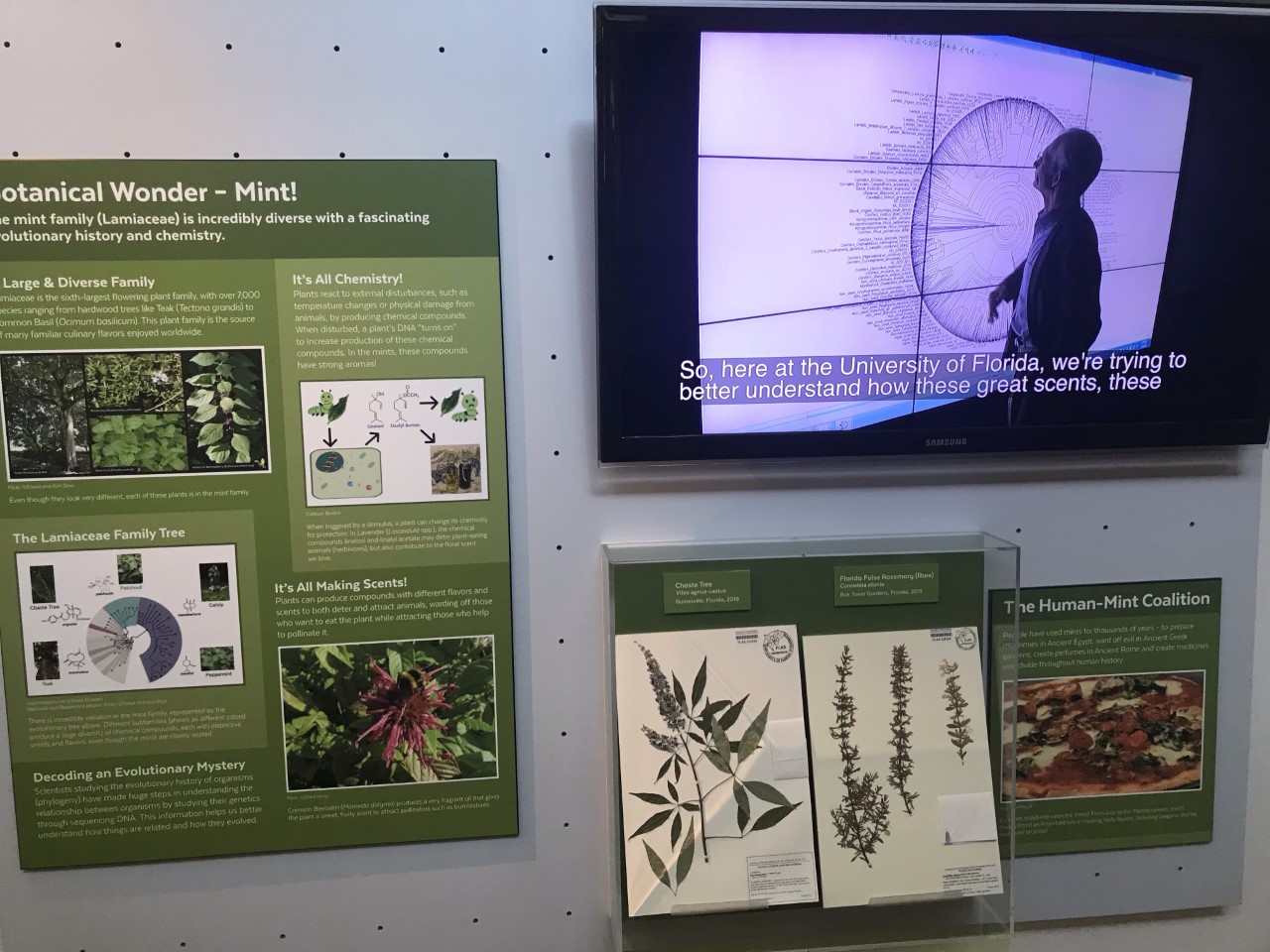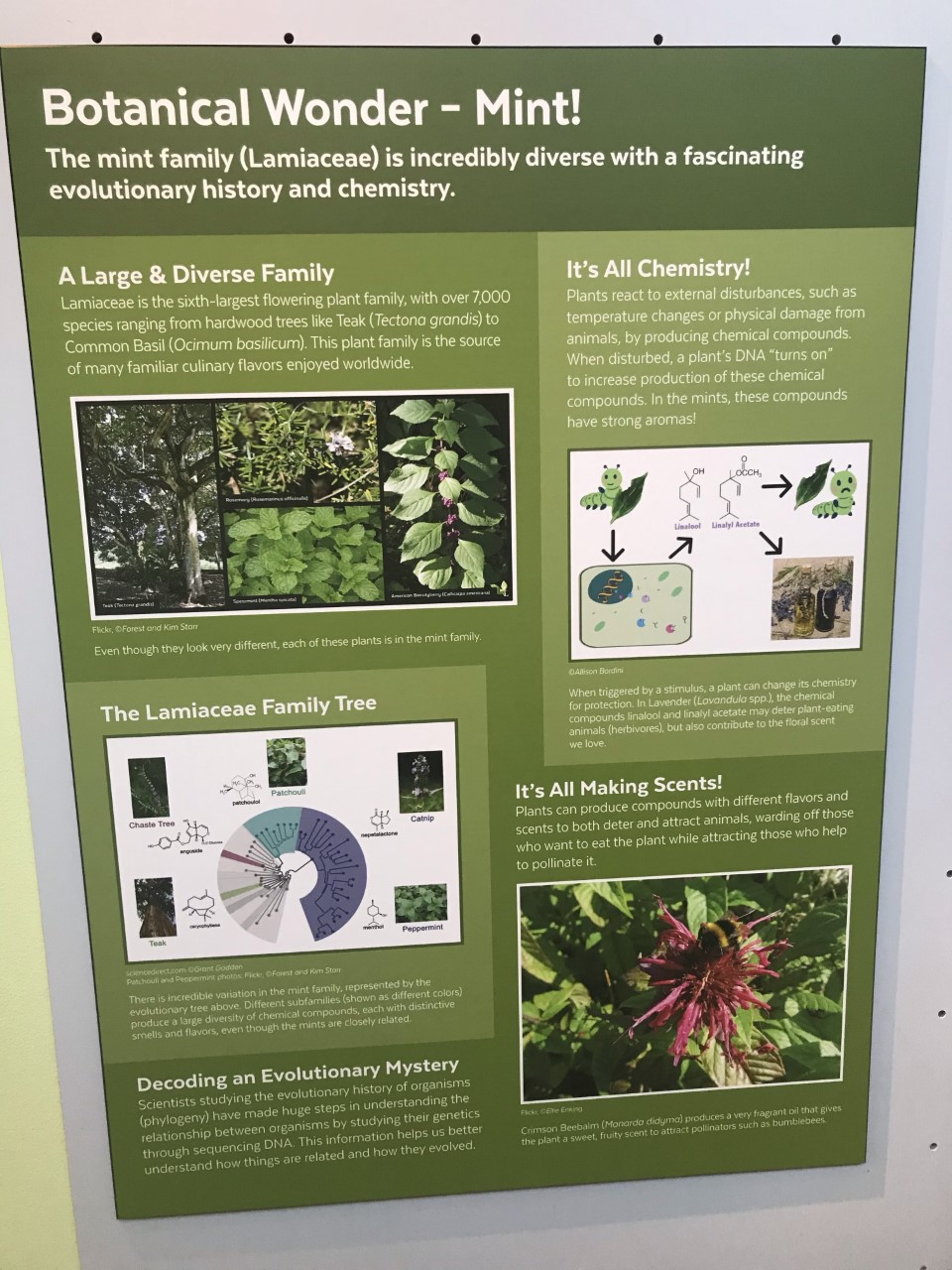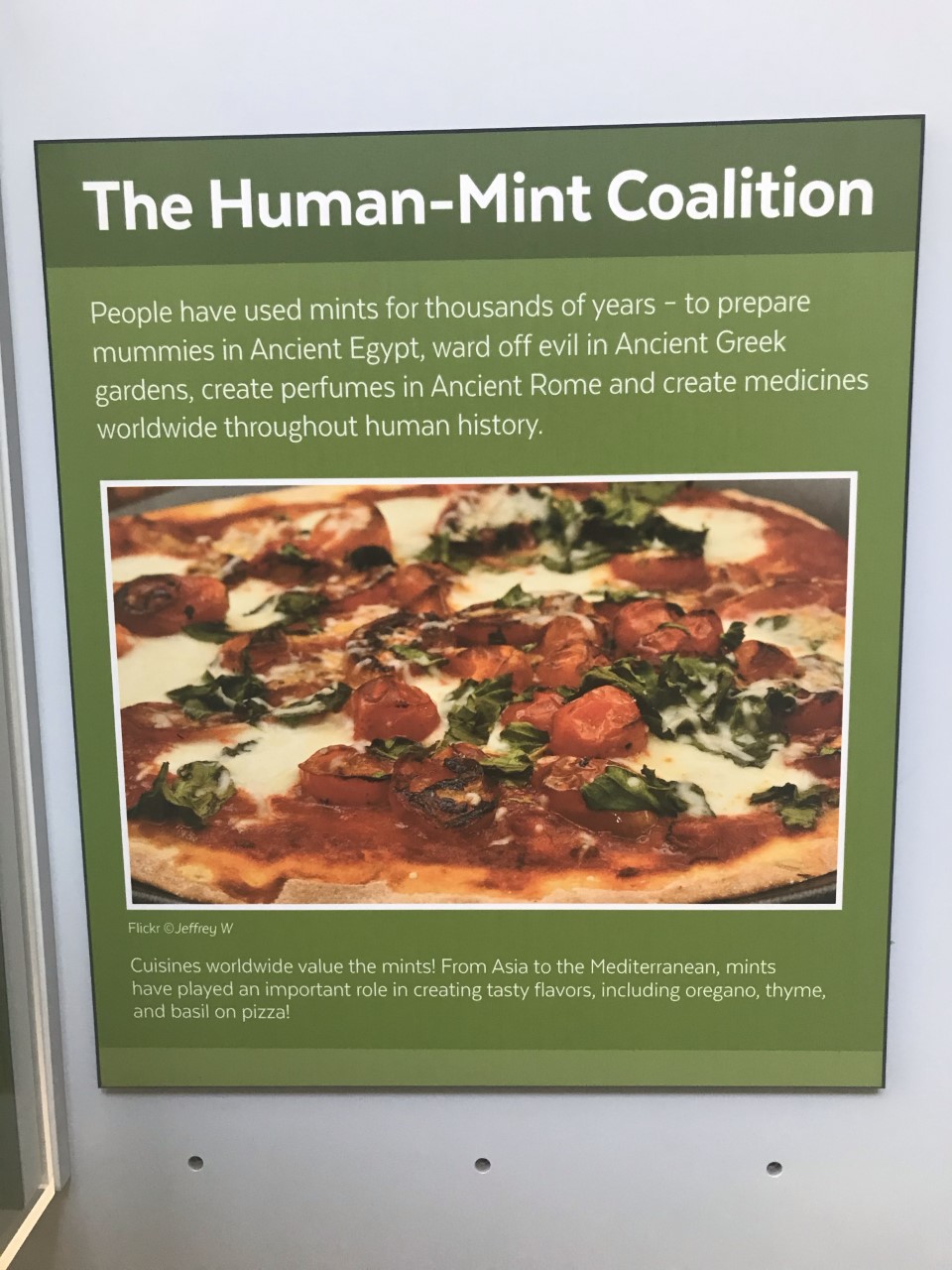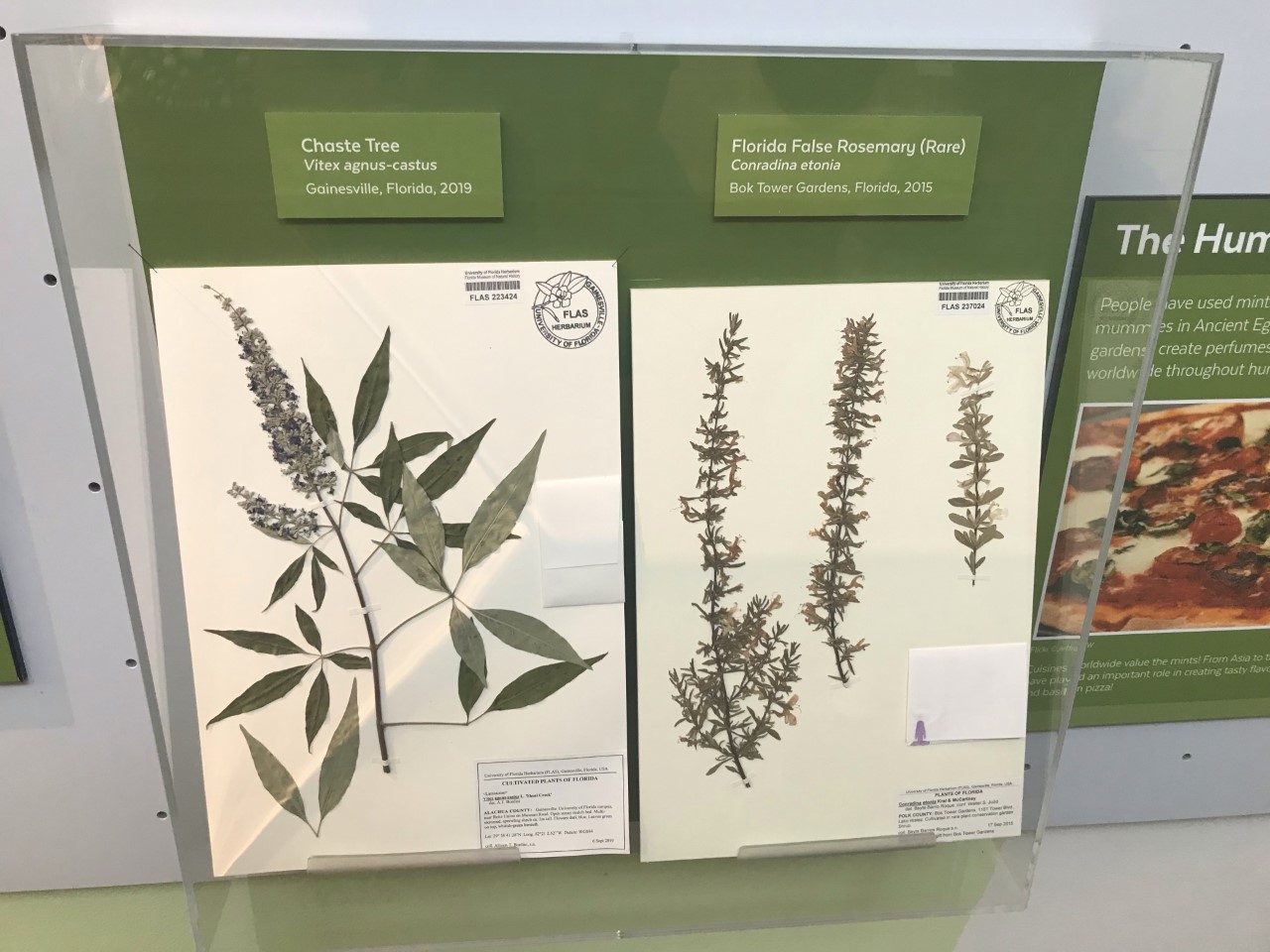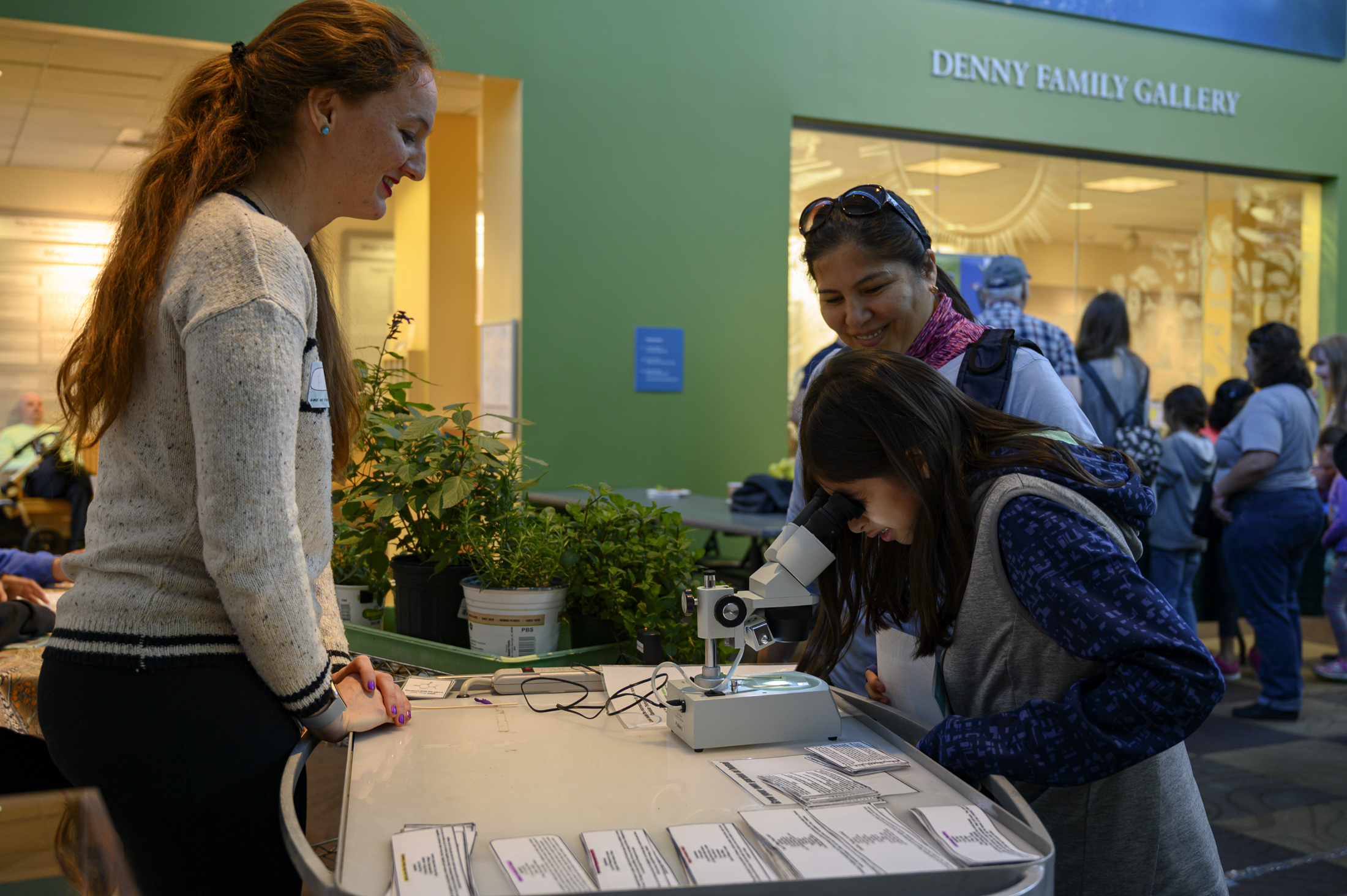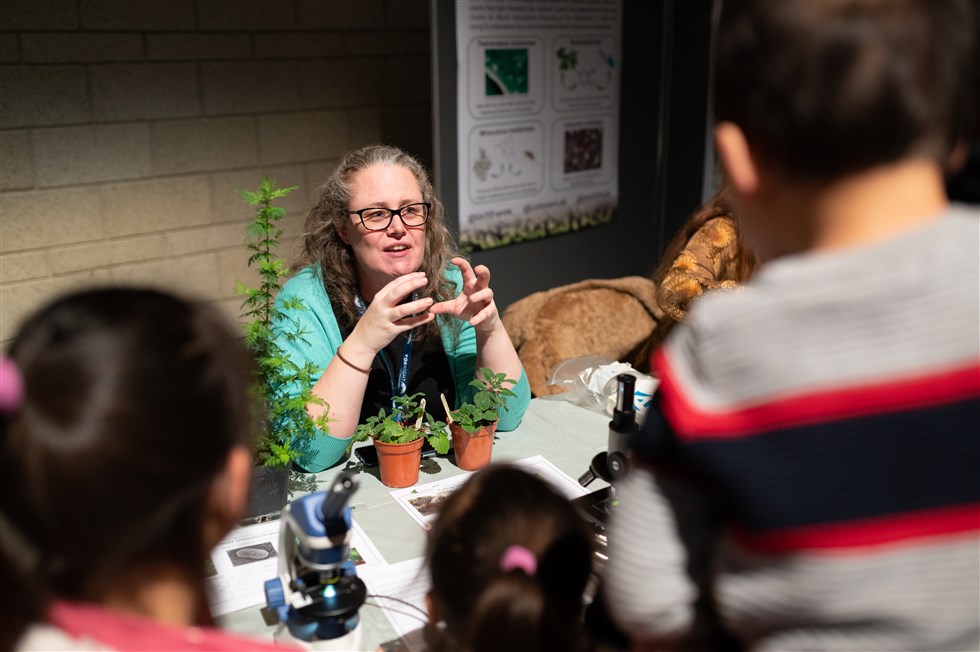







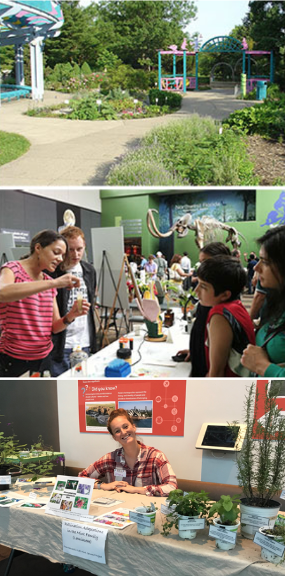 |
Outreach activities planned as part of the Mint Genome Project include a dedicated mint garden and interactive tours of the MSU Horticultural and 4-H Children's Gardens, hands-on classroom learning, and museum experiences. Shown above 4-H Children's Gardens (top) and interactive Earth Day experience at the Florida Museum of Natural History (middle). Allison Bordini at UF Butterfly Fest showing off pollinator-plant interactions on mints (bottom). |
|---|

Outreach is an important component of the Mint Genome Project. As part of our commitment to public education, we will provide a variety of informative resources and experiences that highlight the importance of plants in agriculture and human health.
Doug Soltis, Member of the National Academy of Sciences Talks about Mints
Plant Evolutionary Geneticist Doug Soltis, Ph.D., from the University of Florida explains the DNA/RNA extraction process from mint plants. By analyzing that DNA/RNA data, his research team can create a more detailed mint family tree. Obtaining a better understanding of the genetic underpinning of the chemistry of mints through this research will help increase mint yield or even help create new mint compounds/flavors for the agricultural industry to use in future consumer products. Watch the video on YouTube
Doug also explains how he became interested in studying biodiversity and the research he currently conducts, involving the family tree of plants. Watch the video on YouTube
Interactive Garden Tours
Approximately 100,000 people visit the Michigan State University Horticultural Gardens annually. Each summer, we will maintain a dedicated Lamiaceae garden that features useful species, including mints commonly used as food flavorants, medicines, perfumes, and construction materials. Living plant collections in the garden will be accompanied by interpretive placards and digital information resources. Garden visitors will also have an opportunity to participate in a "Smell Challenge" and "Square Stem Scavenger Hunt," that will guide their exploration of other garden areas and test their mint knowledge and identification skills.
Hands-on Classroom Learning
Jessica Wright, Outreach Coordinator for the Michigan State University 4-H Children's Gardens, will teach visiting K-5 children about mint chemistry, morphology, and biodiversity with hands-on learning experiences in the garden's classroom facility. Children will be able to view, touch, and even taste commonly used mints and view products made with mint. They will also learn about how essential oils are extracted from plants and conduct scientific experiments in the classroom.
Museum Experiences
The Florida Museum of Natural History attracts over 250,000 visitors annually. The Mint Genome Project team will work with museum outreach specialists to develop a multifaceted and interactive exhibit on mints that highlights their diversity, chemistry, and uses. Displays, signage, an interactive SMART board, and coordinated cooking programs will be developed to engage museum visitors.
A new Museum Highlights Display has been created from the collaboration between the Florida Museum of Natural History and the Mint Genome Project team to create an interactive and educational exhibit. Pictures of this exhibit are displayed in the slideshow below.
The Mint Genome Project's "Mint Book" educates people on the science of mints, how to grow them in your own herb garden, and recipes for how to eat them.
Mint Minutes Educational videos Allison Bordini has created a series of educational videos on twitter highlighting the wonderful world of mints which are displayed below.
© 2015 University of Georgia
Buell Lab | Department of Crop and Soil Sciences, 111 Riverbend Rd., Athens, GA 30602 | Tel. (706) 542-6227

